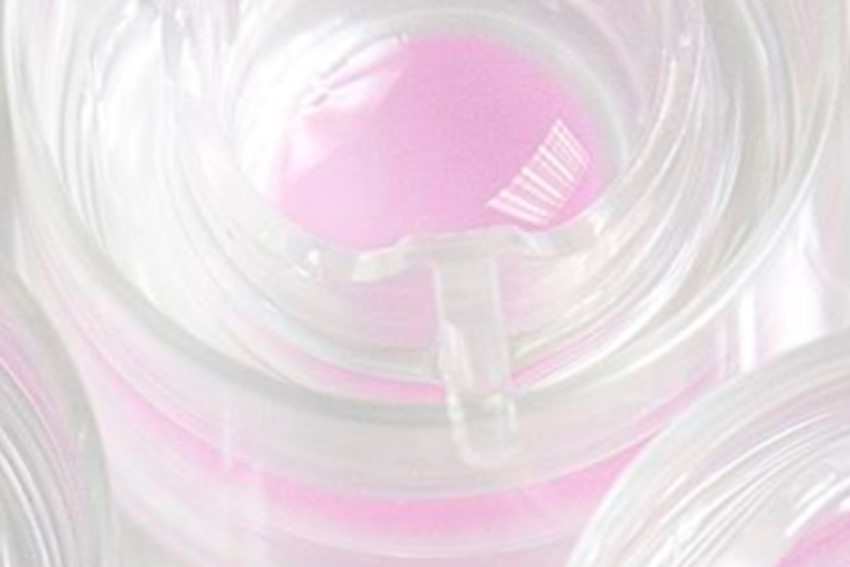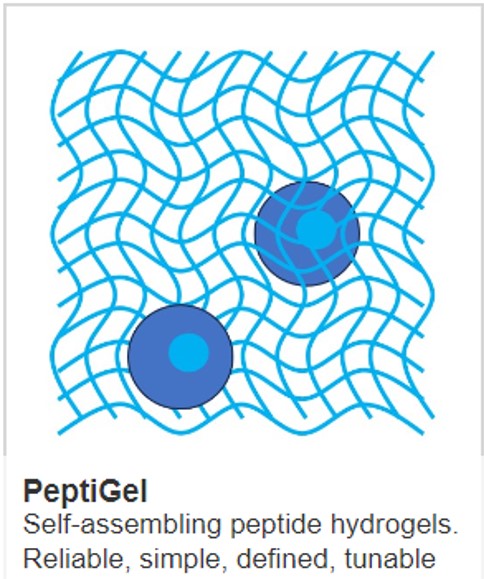What are self-assembling peptide hydrogels?

3D cell culture research these days relies increasingly on self-assembling peptide hydrogels, but what are they and why are they important?
What are hydrogels?
The dictionary definition of hydrogel is “a gel composed usually of one or more polymers suspended in water.” They were introduced around 50 years ago, but significant advancements have been made since then, not only in terms of their application but also in their formulation.
Hydrogels are a water-swollen 3D viscoelastic network of polymers that are self-supporting and allow for the attachment and diffusion of cells and molecules. Cells are embedded inside the hydrogel by mixing the cell solution with the hydrogel before the gel is formed.
These properties mean that they are similar in composition to the extracellular matrix (ECM). The ECM is an extensive network of molecules and proteins that give structure and support to the cells in the human body.
Why are hydrogels important?
Hydrogels have proven themselves to be important in the field of cell culture because they offer:
- better mimicking of the in vivo environment thanks to the ability to customise the formulation of the hydrogel
- better cell-to-cell signalling
- better cell-to-ECM signalling
- regulating cell behaviours
- simple differentiation of cell types
- more physiologically relevant responses
How are hydrogels classified?
Hydrogels can be classified in two ways – natural hydrogels and synthetic hydrogels.
Natural hydrogels include collagen, fibrin, hyaluronic acid, matrigel and other derivatives such as alginate, chitosan and skill fibres. Natural hydrogels have two main drawbacks:
- their mechanical properties and dependence on gelation or polymerization conditions are poorly understood
- their natural composition means they can vary significantly from one batch to another
Synthetic hydrogels such as polyacrylamide, PEG, and peptide hydrogels, are much more reproducible and offer a much greater capability for tuning and tailoring the properties to create a bespoke product specifically designed to meet a cell or tissue’s needs.
What are self-assembly peptide hydrogels?
Self-assembly peptide hydrogels are a category of peptides (amino acids linked by peptide bonds) that undergo spontaneous assembly into ordered nanostructures, acting as building blocks capable of conducting biochemical activities.

How are self-assembly peptide hydrogels made?
For a self-assembly peptide hydrogel to be formed, the dipeptide hydrogelator (a substance that forms a hydrogel) is self-assembled into a one-dimensional supramolecular structure (such as nanofibers and twisted nanoribbons). It is then self-assembled into three-dimensional networks to encapsulate many water molecules inside.
What types of peptide hydrogels are there?
The four main types of peptides hydrogels are:
- PeptiGels – the peptide hydrogels manufactured by Manchester Biogel are biocompatible, biodegradable and generally non-immunogenic
- PuraMatrix – manufactured by Corning, PuraMatrix has been shown to promote the differentiation of hepatocyte progenitor cells, rat pheochromocytoma, hippocampal neurons and endothelial cells
- PGmatrix – specially designed for short or long-term growth of spheroids in an extensive range of tuneable gel strengths for various cell types
- HydroMatrix – supports improved growth and migration in the proliferation of many cell types, including neural stem cells, neurons, glia, astrocytes, fibroblasts, and keratinocytes
What are the advantages of peptide hydrogels?
The advantages associated with using Manchester Biogel’s PeptiGels include:
- biocompatibility
- convenience
- ease of use
- injectability
- limited batch-to-batch variability
- modularity
- printability
- ready to use
- reproducibility
- shear thinning
- sprayable
- transparency
- tunability
To learn more about PeptiGels and how they can help you access a 3D culture model that allows you to grow cells in a reliable and reproducible way, please contact our expert team.
IMAGE: PeptiGel
Learn more about powerful technologies that are enabling research:



